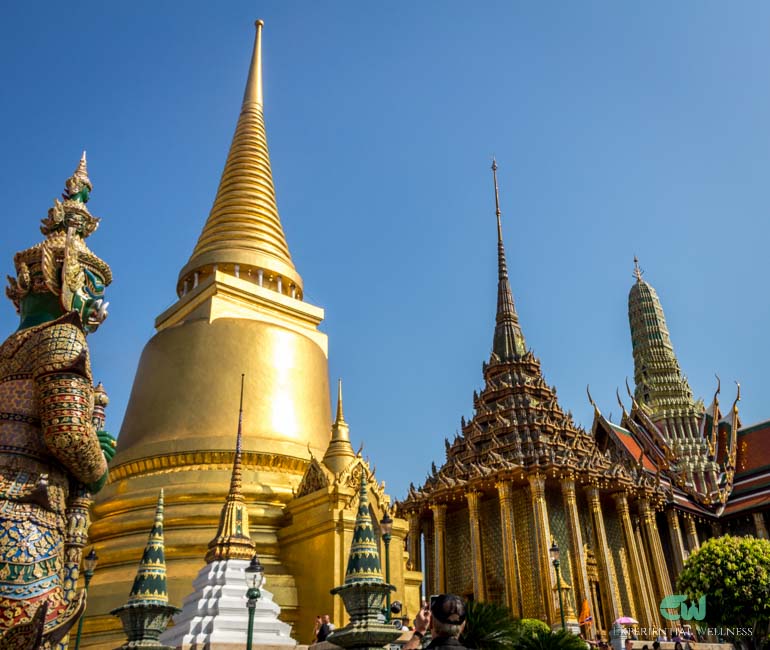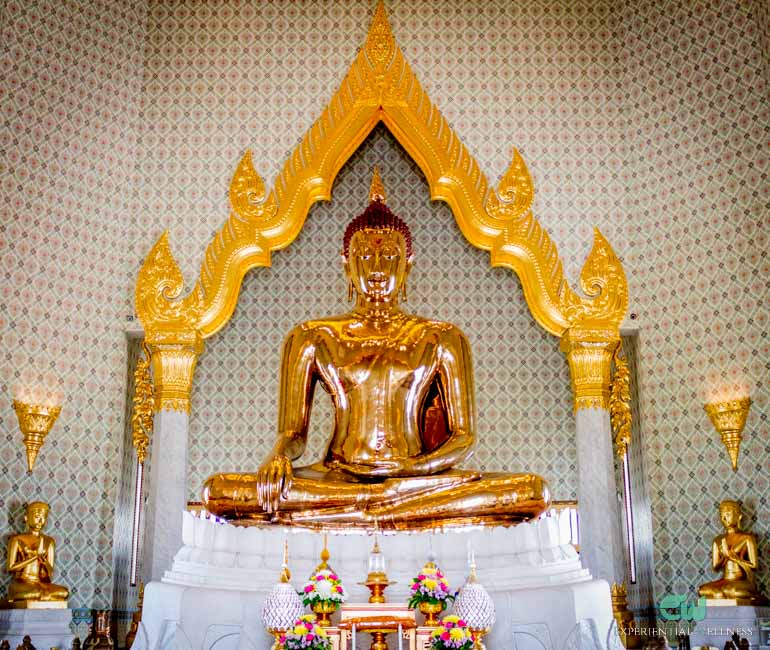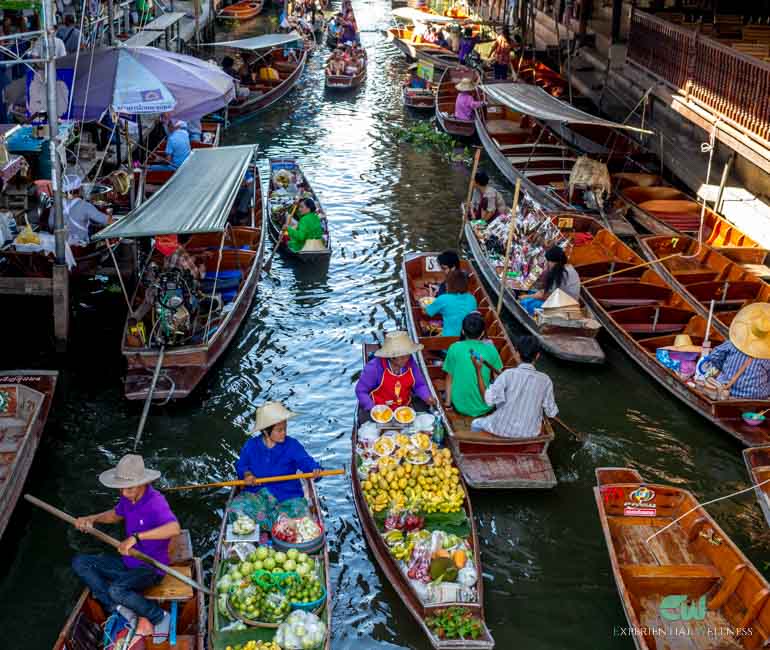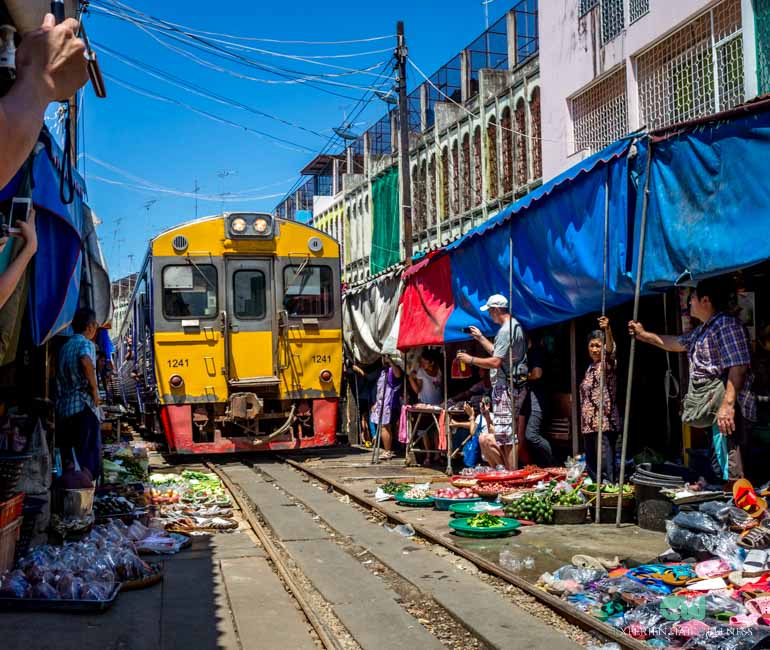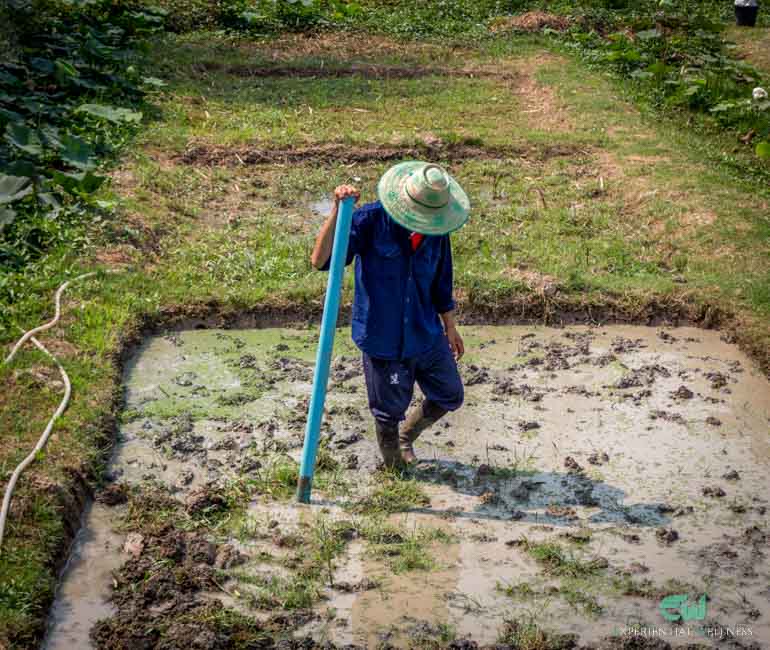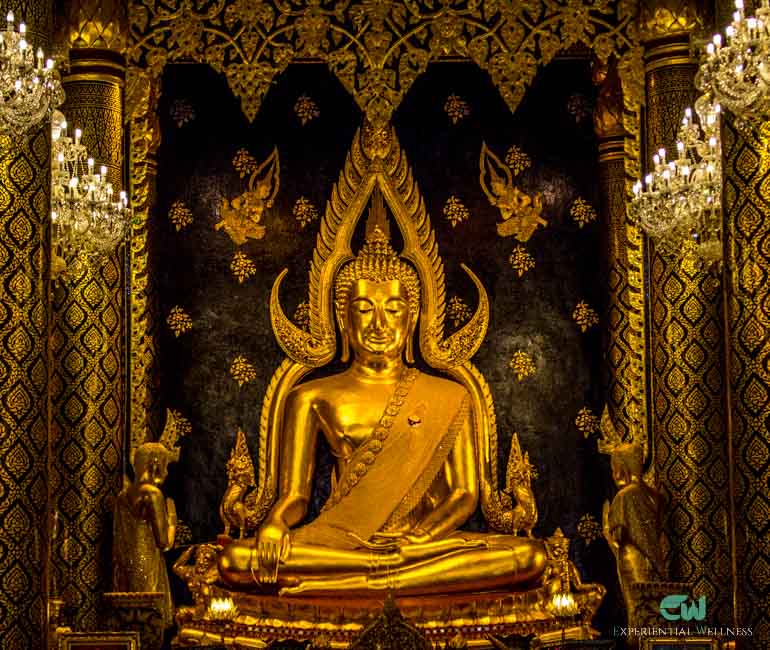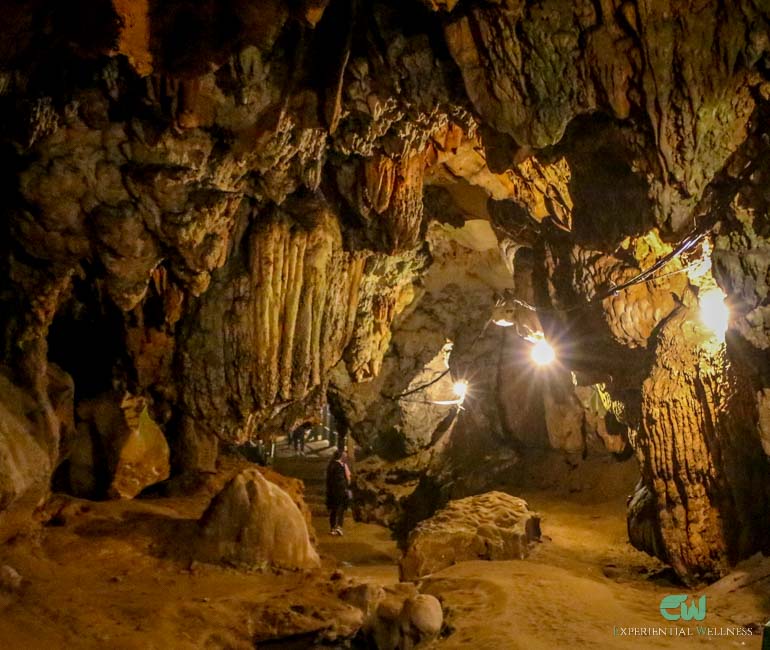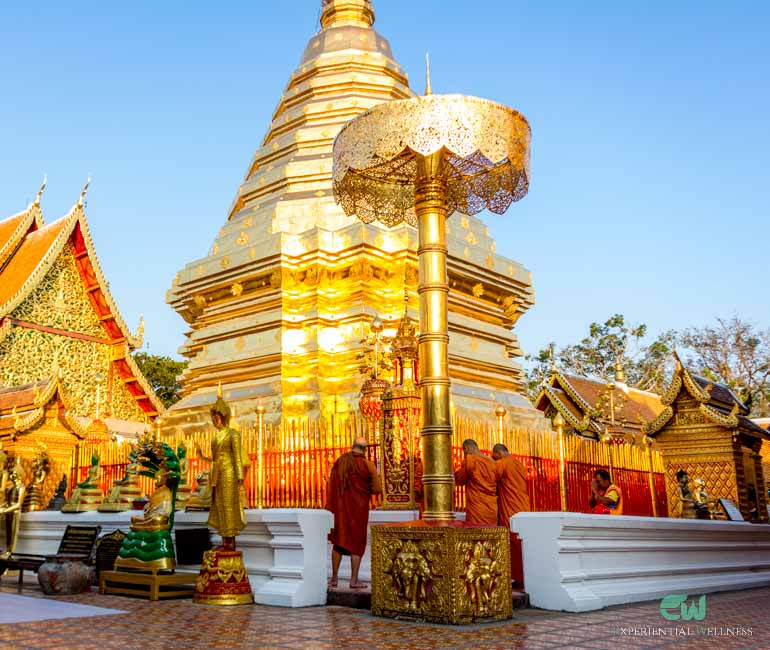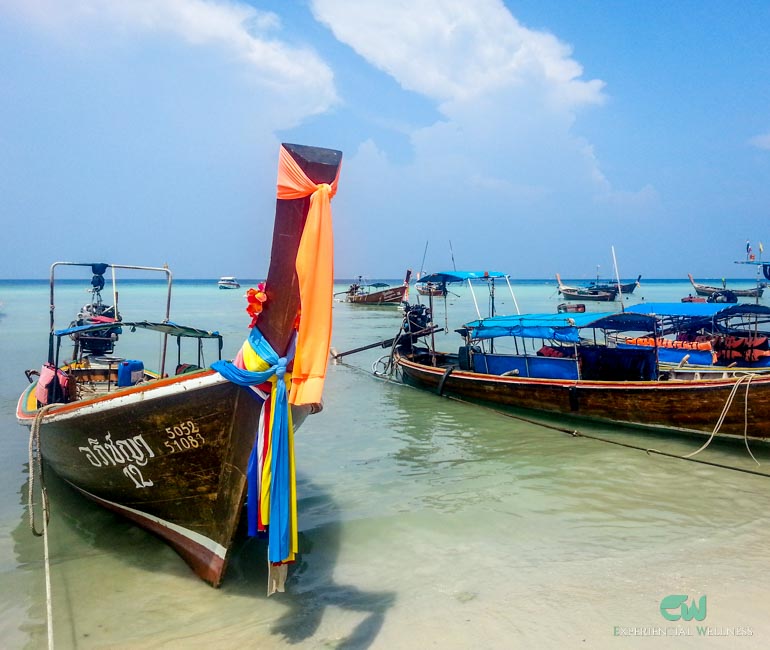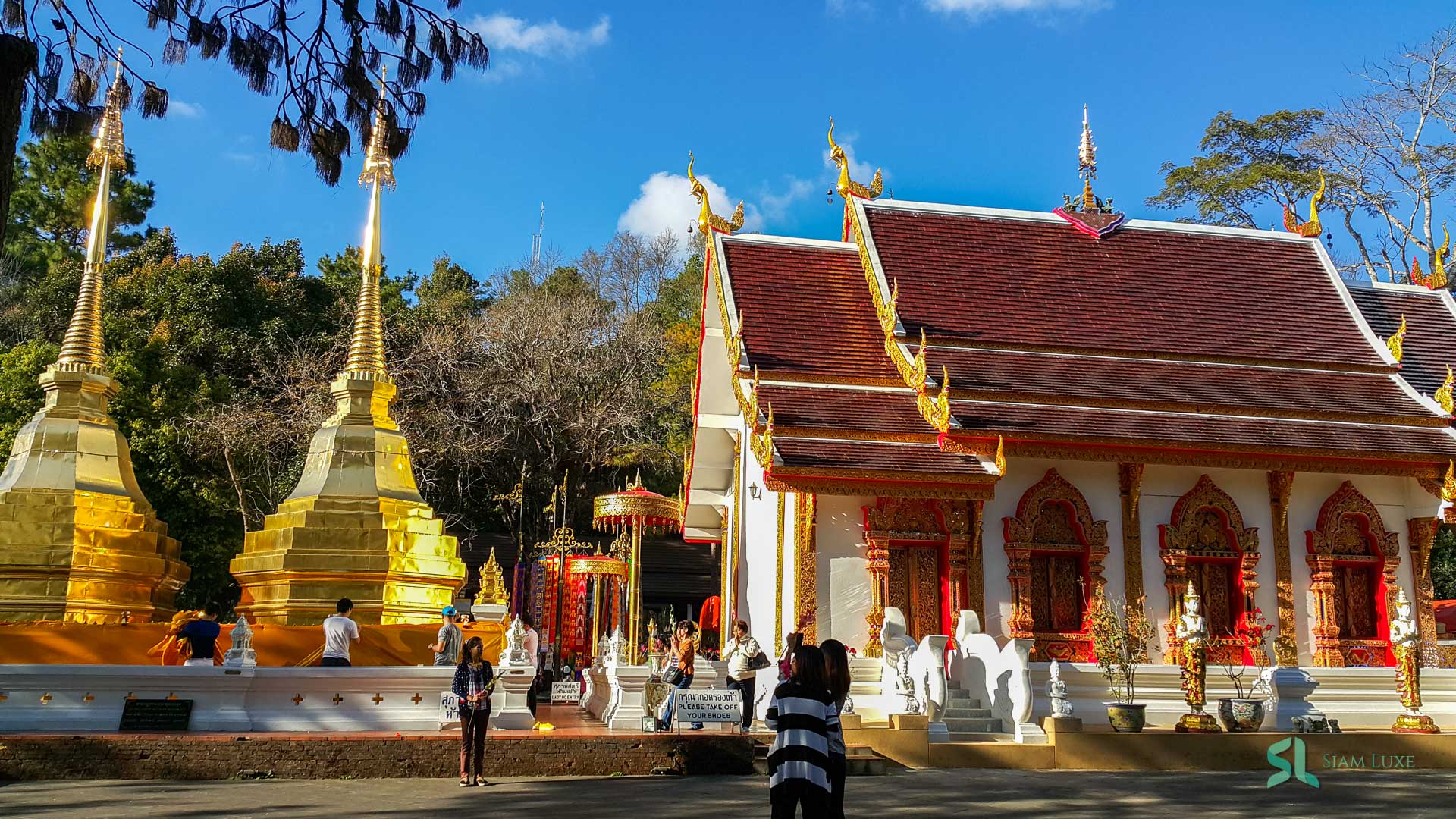Overview
Travel to all main highlights of Thailand within 2 weeks. Starts from Bangkok, heading north through Ayutthaya, Sukhothai, Chiang Rai, and Chiang Mai. The tour finishes in the famous Phuket island where our guests can enjoy the beaches.
Travel Itinerary
Sawatdee – Bangkok
Sawatdee! When you arrive at Suvarnabhumi Airport, meet our staff at the meeting point. We’ll guide you to our private minibus for a transfer to your hotel in Bangkok.
Also, if you aren’t arriving with a totally different flight, it isn’t necessary to worry about delays, as our staff will always be monitoring your flight for this whole day.
Bangkok City Tour
After breakfast, we’ll start our journey in this official and spiritual capital of Thailand, which its name literally means “City of Angels.”
The tour starts at Wat Pho, a temple regarded as the school of Thai massage and the first university of Thailand. Wat Pho is also known as the Temple of the Reclining Buddha, as it enshrines the most beautiful gilded reclining Buddha image that measures 46 meters long. The temple is also home to the Four Great Stupas, which represents the first four kings of the Rattanakosin era.
Next, we visit the Grand Palace and Wat Phra Kaew. This palace is the official residence of the King of Thailand, and still actively used to hold several royal ceremonies and state functions. Here we also visit Wat Phra Kaew, which situated inside the palace. It’s regarded as the most sacred Buddhist temple in Thailand. The Emerald Buddha is enshrined inside the ordination hall of this temple.
Nearby, the Grand Palace, we can also visit Tha Phrachan’s Amulet Market. The market, which situated adjacent to Wat Mahathat or the Front Palace, is one of the largest and most important amulet market in Thailand.
Then we will continue our journey to Bangkok’s Chinatown, which nowadays has turned into one of the liveliest part of Bangkok, to visit Wat Traimit. This temple is home to the Gold Buddha, the world’s largest solid gold Buddha statue, weighs 5.5 tonnes. The Buddha image was cast in the 13th century, and that was 700 years ago.
After lunch, we’ll return to the hotel, so you can enjoy your leisure time.
Damnoen Saduak Floating Market
Our journey begins in the early morning at a notable floating market in the province Ratchaburi, 90 km away from Bangkok. Once we arrive in Ratchaburi, we board a traditional boat to explore its canal and floating market.
This notable man-made canal is known as Damnoen Saduak, which literally means the Convenience Passageway, and was dug in the reign of King Mongkut more than 150 years ago, to connect the Tha Chin River in Nakhon Pathom with the Mae Klong River in Ratchaburi.
Its floating market, the Damnoen Saduak Floating Market, offers a variety of products and souvenirs, and still provides a unique way of buying and selling goods. Many local products are available everyday from morning until afternoon, including Thai snacks, desserts, handicraft items, and souvenirs.
From here, we also visit the Coconut Sugar Factory. This place is where you can try and taste sweet coconut sugar juice, or purchases local products made from coconut sugar.
Before returning to Bangkok, we stop at one of the most spectacular market, situated on both sides of Maeklong Railway, well known as the Umbrella Pull-down Market or the Railway Market. Whenever trains approach this market, shopkeepers will keep their goods and umbrella away from the rails, and immediately push everything back as soon as the train has passed.
Arrive at your hotel in Bangkok in the afternoon.
Ayutthaya Kingdom
Today, we’ll travel back in time on an exclusive journey around the Ancient Kingdom of Ayutthaya (14th to 18th century). This UNESCO World Heritage City was once the most populous and impressive city in the world. It had been a flourishing and prosperous capital for more than 400 years before invaders came and completely destroyed it.
Upon arrival in Ayutthaya, we first visit Bang Pa-In Summer Palace, built by King Prasat Thong. This is a magnificent royal palace, which has a history dating back to the 17th century. The palace has been used many times, since the beginning of the Rattanakosin era, to welcome important such as Tsar Nicholas II of Russia.
After visiting the palace, we continue on road through Ayutthaya’s green rice fields, before stopping at Wat Phanan Choeng, one of the oldest temple of Ayutthaya, as it was built in 1324 or 26 years before the founding of the city.
Then we travel to Wat Yai Chai Mongkol (Mongkol is pronounced Mongkhon), or the Victory Temple. This temple is also located outside the moat. This temple is very famous for its giant stupa, which can be seen from a great distance, and its history and legend relating to King Naresuan, who has been regarded as the greatest king in the Siamese history.
Next, we cross to bridge to the island, traveling to Wihan Phramongkhon Bophit and Wat Phra Sri Sanphet. They are ones of the most visited attractions in Ayutthaya. The latter is also the most important place for the Ayutthaya Kingdom, as it’s located in the ancient palace compound, very similar to the way that the Emerald Buddha Temple is situated inside of the Grand Palace in Bangkok.
Here, we’ll also have an opportunity to try and taste the famous sweet Thai style cotton candy or Roti Saimai, an all-time favourite dessert for many Thais and foreigners.
Enjoy lunch at a local restaurant before we continue to Wat Mahathat, a temple built in the early Ayutthaya era, and also the place where the famous sandstone Buddha head entangled in tree roots. Nearby this monastery, we’ll visit Wat Ratchaburana to discover the paintings inside of a 2-level crypt beneath the stupa.
Then check-in and relax at your hotel in Ayutthaya.
Lopburi – Monkeys – Phitsanulok
After breakfast, we will check out from the hotel in Ayutthaya. Our guide will then take you to Lopburi and Phitsanulok.
As soon as we arrive in Lopburi, you will notice that this little town is overrun by thousands of monkeys.
In this town, we first visit King Narai’s Palace, or Phra Narai Ratchaniwet, ruins of a former palace built by King Narai, the great king who ruled Ayutthaya in the mid-17th century. This palace once was the second capital of the Ayutthaya Kingdom, but were abandoned after King Narai passed away. After some restorations, it has been reopened as the “King Narai National Museum.”
Then we travel further into the heart of the town, and say hello to the monkeys at Prang Sam Yot. This is the ruin of an old Khmer tower, situating in the center of Lopburi.
Located adjacent to Prang Sam Yot is San Phra Kan Shrine. This small shrine was built in dedication to Vishnu, one of the supreme God in Hinduism.
After exploring the town of Lopburi, we’ll continue our long journey to Naresuan Bridge in Phitsanulok.
At this bridge over the Nan River, there is a highest ranking royal temple called “Wat Phra Si Rattana Mahathat.” This temple houses one of the world’s most beautiful Buddha image: Phra Phuttha Chinnarat. The impressive Buddha image was cast in the reign of King Lithai around the 13-14th century.
Check-in at your hotel in Phitsanulok and relax at your own leisure.
Sukhothai Agriculture Tour
Check-out and we’ll transfer you to a farming area in Sukhothai. Upon arrival, we’ll experience the life of an organic farmer, getting on a “Rot E-Taen,” a special type of vehicle used mainly in farms. Here we’ll collect some duck eggs and learn about the process of Thailand’s organic farming.
We’ll enjoy and learn through various activities, including transplanting rice seedlings, harvesting in a demonstration field, husking paddy rice, and riding on a water buffalo.
After lunch, we continue to our hotel in Sukhothai. Check-in and relax for a while preparing for a bicycle trip around the Kingdom of Sukhothai.
At Sukhothai Historical Park, there are remains of more than twenty temples. On our cycling trip, we will be able to visit some of the most important ones, including Wat Mahathat, the largest temple situated right in the center of this city, and Noen Prasat or the Palace Hill, where you will see the remain of the old palace. It’s also the place that archaeologists found the so-called “Manang Kasila Throne,” a throne belonged to King Ram Khamhaeng the Great.
This old Kingdom of Sukhothai had existed as an independent state from the 13th to 14th century, before it became part of Ayutthaya.
Outside of the city wall, we also visit Wat Si Chum, which enshrines the famous 700-year old Buddha image, seated inside of a square brick Mandapa.
Return to your hotel in Sukhothai.
The White Temple
Today, we begin traveling through a mountainous natural region in the Thai Highlands. This is the part of a mountain range system linking to the Himalayas.
After breakfast and checkout from the hotel, we will take you to Lampang, visiting Wat Phra That Lampang Luang, the most impressive and well-preserved temple in the province.
This temple will give you an amazing glimpse into the past. The style of architecture is not only typical to the Lanna region but also very well preserved. It houses several important structures, and represents the true Lanna style of art prior modern renovations. Legend has it that the main stupa of this temple enshrines a relic of Lord Buddha, which was gathered after the Buddha’s cremation.
We also travel to Ban Sao Nak, or “the house of many pillars.” This is a traditional Thai-Lanna style house built more than one century ago.
After lunch, we continue our long journey to Chiang Rai, the northernmost province of Thailand.
Before arriving in the town, we will stop at Wat Rong Khun, which is situated 15 kilometers from the main town of Chiang Rai. The temple is better known to foreigners as the White Temple. Although this is a contemporary temple, it is one of the most recognizable temples in Thailand, very famous for its splendid arts, especially the principal white building and sculptures, in the gates of hell and heaven.
After visiting the temple, we will take you to the hotel in Chiang Rai. Check-in to this hotel, and enjoy your own free time in the evening. Chiang Rai Night Bazaar may be worth a visit if you’re looking for a relaxed dinner, souvenir stalls, or bargain shopping.
Golden Triangle
Chiang Rai, the northernmost province in Thailand, has a long history dating back to before the 7th century. Its present-day main town was also a former short time capital of the Kingdom of Ngoen Yang, before King Mangrai moved his capital to Chiang Mai and founded the Lanna Kingdom.
In the morning, we travel to Doi Tung, a steep mountain, situated approximately 50 kilometers from Chiang Rai.
As soon as we arrive, we will stop at Doi Tung Royal Villa. This villa was a former residence of HRH Princess Srinagarindra, the mother of the present king, who worked for a reforestation project in this area. It was built in a contemporary Lanna style, focusing on the uses of discarded pine and teak woods.
The beautiful garden, located adjacent to the Royal Villa, is the Mae Fah Luang Garden. The area was home to the hilltribe people of Akha, which nowadays moved to a new village five-hundred meters away, where there are provide electricity and tap water. The garden contains different kinds of temperate plants and colorful flowers.
After visiting the garden, we will continue our journey to the summit of Doi Tung, to the best known place in Chiang Rai: Wat Phra That Doi Tung. This is a thousand-year-old temple, situated astonishingly on an extraordinary location, right on the cliff, close to the summit of the mountaintop.
After that, we will continue our journey to the Golden Triangle, which is located along the Mekong River where the three borders meet. This tripoint of Thailand, Myanmar, and Laos once was one of Asia’s two largest opium-producing areas, together with Afghanistan.
Here we also visit the Opium Museum, which was built to educate people about the dangers of this type of drugs.
Apart from these, when we return to the town of Chiang Rai, we will visit Wat Phra Kaew, a temple with a huge historical significance. This temple shares its name and history with Wat Phra Kaew of the Grand Palace in Bangkok. Nevertheless, it also has its own history dating back to the 14th century.
According to the Chronicle of the Emerald Buddha, Wat Phra Kaew of Chiang Rai was the place where people originally found the Emerald Buddha image. The image was discovered 700 years ago after a mysterious lightning struck on top of the temple’s main stupa.
We return to our hotel and arrive in the late afternoon.
Chiang Dao Cave
After checkout from the hotel, we will leave behind the town of Chiang Rai, and head for Ban Thaton, through the famous scenic route: Highway 107.
Highway 107 is an alternative route between Chiang Rai and Chiang Mai. Along the highway, we travel through several areas, which are famous for its natural and cultural beauty, including the rural areas of Mae Ai and Chiang Dao, where we can enjoy breathtaking sceneries, beautiful mountains, paddy fields, and local villages.
Our first stop will be in a peaceful area of Ban Thaton, situated approximately 90 kilometers from Chiang Rai Province. Here we visit Wat Thaton, a large temple complex, located adjacent to the Mae Kok River. The temple consists of nine levels, starting from the ground floor to the top of the edge of a mountain range.
On the eighth floor, we can visit Phra Chedi Kaew or the Crystal Stupa, which is actually a large building containing important image replicas of Lord Buddha, which most are performing a different gesture.
The interior design of this building is decorated by a number of stone guardians, images of revered monks, and a dragon spiral staircase. Its mural paintings also depict the life story of Lord Buddha, from his birth until entering Parinirvana.
Apart from Wat Thaton, we will travel to Chiang Dao Cave. This complex of limestone caves stretches more than 10 kilometers through the Chiang Dao mountain, but only a small portion of the complex, which has previously been converted into a Buddhist monastery, is easy to explore on our own.
After that, we head further south to Chiang Mai. Arrive at your hotel in Chiang Mai in the late afternoon.
Chiang Mai City Tour
Chiang Mai has been the center of Lanna culture since it was established in the late 13th century by King Mangrai. Even today, the city still represents a perfect blend of old charm and contemporary society.
Our first journey starts on Mount Suthep, a steep mountain behind the city. We’ll drive up to almost the top of Mount Suthep. Then we continue on an elevator that will take us to a sacred temple.
This temple is Wat Phra That Doi Suthep. It is situated right on the cliff of Mount Suthep, and probably the most well-known monastery in Chiang Mai, due to the fact that the temple itself can be seen from almost anywhere from the city of Chiang Mai.
Then we return back to the city, heading to Wat Ched Yod, a unique and impressive temple built in 1453 to host the eighth World Buddhist Council. Unlike other temples, the prominent center prang of this temple is not a prang or stupa. It’s a giant Bodhi tree, which was propagated from the original Mahabodhi Tree, where Lord Buddha attained enlightenment in Bodh Gaya, India.
We’ll continue to heart of Chiang Mai. At almost right in the middle of this city, we can visit Wat Chedi Luang. This temple enshrined the Emerald Buddha image for 70 years, and is housing a giant stupa supported by elephant caryatids, an influence from the Ceylonese style of art.
We also travel to Wat Phra Singh. This temple will give you the best examples of the classic Lanna architecture, and its ordination hall is also one of the most beautiful in Thailand.
In the afternoon, we’ll tour around the Sankampaeng Road. This area is home to several to Thai-Lanna handicraft communities. Their best-known products include Borsang Umbrella, silverware, lacquerware, and wood-carving products.
Return to the hotel in Chiang Mai, and enjoy your leisure time.
This evening is your own free time to relax. Enjoy your bargain shopping with hundreds of food and souvenir stalls at Chiang Mai Night Bazaar (Mon-Sat) or Sunday Walking Street (Sun).
Chiang Mai – Phuket
Spend the morning in Chiang Mai before we transfer you to Chiang Mai Airport for your flight to Phuket. (This flight is included.)
Phuket, also known as “Pearl of the Andaman Sea,” is the largest and only island province in Thailand.
When your flight arrives in Phuket, we will transfer you to the hotel in Patong. The afternoon period is free to unwind and relax on the famous Patong beach.
Phuket
Enjoy one full day at your own leisure.
Phuket
Enjoy another full day at your own leisure.
Departure
Free until we transfer you to Phuket Airport for your domestic flight (included) to Suvarnabhumi Airport in Bangkok.
Siam Luxe Highlights
- The Grand Palace, Bangkok
- Emerald, Reclining, and Gold Buddha
- Chiang Mai City Tour
- Lanna Culture
- Ayutthaya Historical Park
- Sukhothai Historical Park
- Damnoen Saduak Floating Market
- Agricultural Tour
Inclusions & Prices
Meals
13 Breakfasts and 9 Lunches
Accommodations
13 Nights in 3.5+ Star Hotels
Transportation
Private Car/Minibus, Long-tail Boat, Rot E-Taen Farm Vehicle, and 2 Domestic Flight Tickets: Chiang Mai(CNX) – Phuket(HKT); Phuket(HKT) – Bangkok(BKK)
Tour Guide
Enthusiastic English Speaking Tour Guide (10 Days)
Prices
| No. of Tourists | Price per Person |
|---|---|
| 2-3 Persons | $ 2,797฿ 85,400 |
| 4-5 Persons | $ 1,988฿ 60,700 |
| 6-7 Persons | $ 1,720฿ 52,500 |
| 8 Persons | $ 1,595฿ 48,700 |
Prices shown are per person and based on double occupancy unless otherwise noted. They are inclusive of service charge, local and government taxes and non-commissionable. Bookings are confirmed on the receipt of your deposits. The final payment for your vacation is due 30 days prior to arrival.
